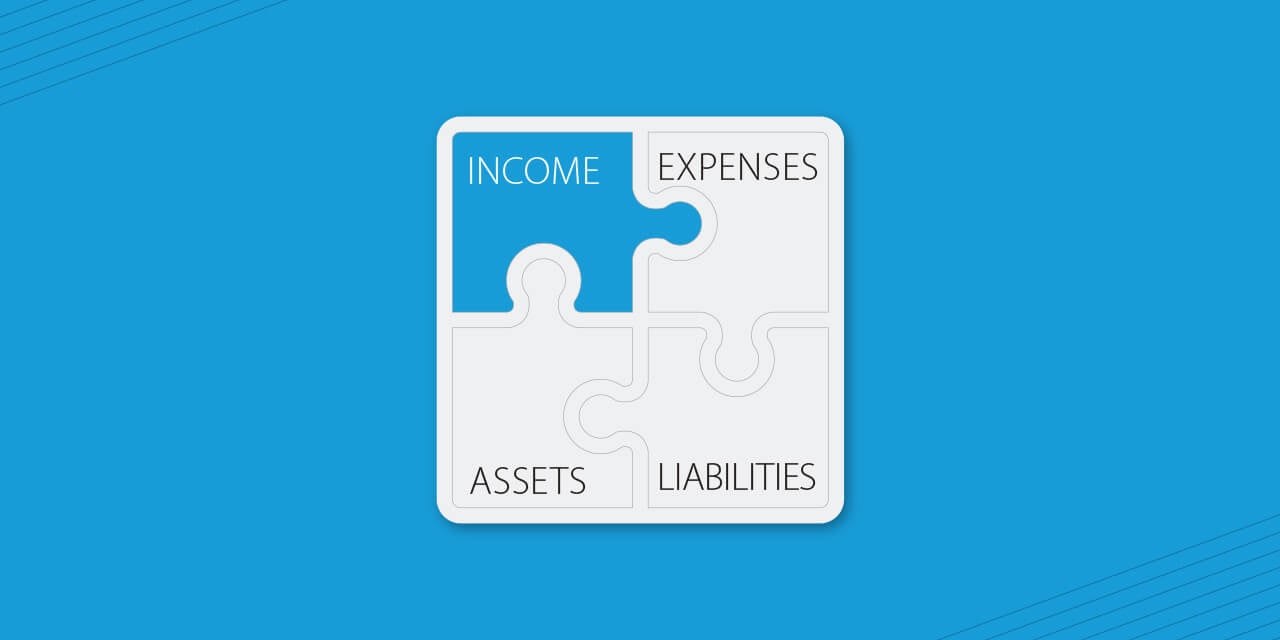
Retirement Guide
for Women
Understanding Your Wealth: Assets
Your retirement assets are the financial resources you’re bringing to support yourself in retirement – the money you’ll live off of in your golden years. For most people, these will be what are known as qualified retirement accounts, such as an IRA or 401(k), though your personal savings and certain tax-free accounts could be included here too.
Qualified Retirement Accounts
Qualified retirement accounts are investment accounts that provide certain tax benefits when used toward retirement. The most common are defined contribution plans (such as 401(k), 403(b) or employee stock ownership plans) and Individual Retirement Accounts, or IRAs. They both operate on the same basic principle – money is invested on your behalf and, so long as certain Internal Revenue Service rules are followed, can be withdrawn as needed while providing tax advantages along the way.
401(k)s and Other Defined Contribution Plans
Defined contribution plans (like 401(k)s) have replaced defined benefit plans (like pensions) as the primary vehicle employers use to help their employees fund their retirement. With defined contribution plans, employers can choose to contribute (alongside the employee) to each employee’s individual retirement account, and those dollars are invested on the employee’s behalf. Over time, these accounts are intended to grow through additional employer / employee contributions and potential investment gains into valuable retirement nest eggs. And while 401(k)s are the most popular defined contribution plan in the private sector, other defined contribution plans include 403(b) plans, employee stock ownership plans and profit-sharing plans.
Defined contribution plans allow your contributions to either grow tax-free (meaning you pay taxes when you make your contributions) or tax-deferred (meaning you pay taxes on any withdrawals). There are also many federal regulations specifying how much you can contribute to a defined contribution plan, the circumstances under which you can withdraw and any penalties for withdrawing early.
|
Divorce and Widowhood |
Funds contributed to a defined contribution account during a marriage are typically considered marital property – unless there is an existing prenuptial agreement stipulating otherwise, each divorcing spouse is entitled to half of the value of the account. A divorce is one of the few instances that allows you to access your 401(k) early without a tax penalty.
In the event of the death of a defined contribution account holder, the funds will be directed to the designated beneficiary of the account. (The beneficiary is named when the account is set up but can be changed at the behest of the account holder.) If you are the designated beneficiary, you can withdraw the money from the account (and pay whatever taxes are due), move the money into what is known as an inherited IRA, decline it, or if you are the spouse of the deceased owner, roll the account over to your own IRA.
|
Strategies for Maximizing Your Defined Contribution Plan |
Take advantage of the employer match. Many companies will incentivize employees saving for retirement through an employer match program, where they will match a portion of what the employee contributes. (For example, the program might stipulate that for every dollar the employee contributes to their 401(k), the company will match it, up to $5,000.) This is free money that can boost anyone’s nest egg.
Make catch-up contributions. The IRS allows individuals aged 50 or older to make annual catch-up contributions to many defined contribution plans, including 401(k)s. This could be an opportunity to make up for time out of the workforce or for periods where you weren’t able to save as much for retirement.
Individual Retirement Accounts (IRAs)
Tax-advantaged retirement plans are not limited to just those offered by businesses to their employees. You can create your own in what is referred to as an individual retirement account, or IRA. While there are different kinds of IRAs, they generally come in two flavors – traditional and Roth. While there are a few differences between the two, the one most people focus on is how they’re taxed: With a traditional IRA, contributions go in tax-free but withdrawals are taxed, while with a Roth, your contributions are taxed but withdrawals after age 59½ are tax-free. The three main differences between the two accounts are called out specifically in the graphic slightly below.
Whether it’s a traditional or a Roth, the major benefits to having an IRA are the same as for defined benefit and contribution plans and health savings accounts – they have the potential to grow over time by accessing the markets and offer significant tax advantages.
|
Divorce and Widowhood |
Regardless of whether it's a traditional or Roth IRA, the rules surrounding the division of these assets after a divorce generally follow each state's property ownership rules. In the event of the death of a spouse, your options will vary depending on such factors as your age, the age of the deceased spouse and if your spouse designated others as co-beneficiaries. Generally your choices are similar to those with a defined contribution plan: You can distribute the assets (with a penalty), roll the assets into a different retirement account or decline the assets.
|
Strategies for Maximizing Your IRA |
• For both traditional and Roth IRAs, you are limited in how much you can contribute in a given year (currently $7,000). Like 401(k)s, though, if you are age 50 or older, you can make an additional “catch-up” contribution of $1,000 per year.
• While it’s not the only reason to consider a Roth IRA over a traditional IRA, longevity is a significant one. The longer you live, the longer you would pay taxes with a traditional IRA – which could make tax-free withdrawals from a Roth IRA especially appealing to women with a long life expectancy.
• Typically, you can fund your IRA only with income you earn. A rare exception to this rule is what’s known as a spousal IRA. A spousal IRA is a traditional or Roth IRA in the name of the non-working spouse that the working spouse can contribute to. There are certain eligibility requirements – for example, the married couple has to file their taxes jointly – but it is a strategy that lets married couples essentially double how much they could contribute to their IRAs otherwise.
3 Main Differences Between Traditional and Roth IRAs
Unlike a traditional IRA, a Roth IRA places an income limit on eligibility – if your income surpasses a certain threshold, you are ineligible to open a Roth IRA. Traditional IRAs have no income-based eligibility thresholds.
If your income falls below a specified threshold (again based on tax filing status), you obtain an immediate tax break on contributions with a traditional IRA, allowing you to lower your taxable income for the year in which you contribute. Roth IRAs do not offer an upfront tax break.
While you can withdraw from a traditional IRA after age 59½ without penalty, you pay current tax rates on the withdrawal. Once you turn 73 (or 75 if you were born in 1960 or later) you are obligated to start making withdrawals. With a Roth IRA, withdrawals after age 59½ are tax-free so long as you’ve had the account for at least five years, and there are no required minimum distributions.
Personal Savings
Personal savings generally aren’t considered a main source of retirement funds: With savings and money market accounts traditionally offering incredibly low yields, it’s hard to benefit from compounding in those types of accounts, even over long periods of time. Still, there’s a role for these types of accounts in retirement.
What savings and money market accounts lack in generating interest, they make up for in accessibility and flexibility. If you have a large, unexpected expense (such as a tax bill), tapping your portfolio can raise all kinds of complications. (Which stock are you going to sell? What are the tax implications of selling stock? Does a stock sale impact your broader financial plans? How long will it take for the transaction to be completed? What fees will the sale incur?) A robust personal savings account lets you cover emergency or even day-to-day expenses without necessitating a stock sale. Given the importance of making sure your portfolio lasts, a personal savings account can be especially useful in retirement.
Tax-Free Accounts
Most retirement accounts offer certain tax advantages, such as tax deferrals or tax-free distributions, but very few are wholly tax-free. One such account is the Health Savings Account, or HSA. Investments in an HSA go in tax-free, grow tax-free and – so long as they’re used for qualified health expenses – can be withdrawn tax-free. Plus, because the IRS doesn’t require you to pay for healthcare expenses in the same year that you incur them, you can pay for your healthcare expenses out of pocket and then reimburse yourself from your HSA contributions years later.
Given the skyrocketing costs of healthcare, an HSA account can be a valuable addition to your retirement financial plans.
Baird's Retirement Guide for Women:
NEXT: Understanding Your Wealth: Income >>
Explore the Rest of the Guide:
Build Confidence in Retirement >>
How We Got Here >>
Understanding Your Wealth: Assets
Understanding Your Wealth: Income >>
Understanding Your Wealth: Liabilities >>
Understanding Your Wealth: Expenses >>
Where We Go from Here >>
